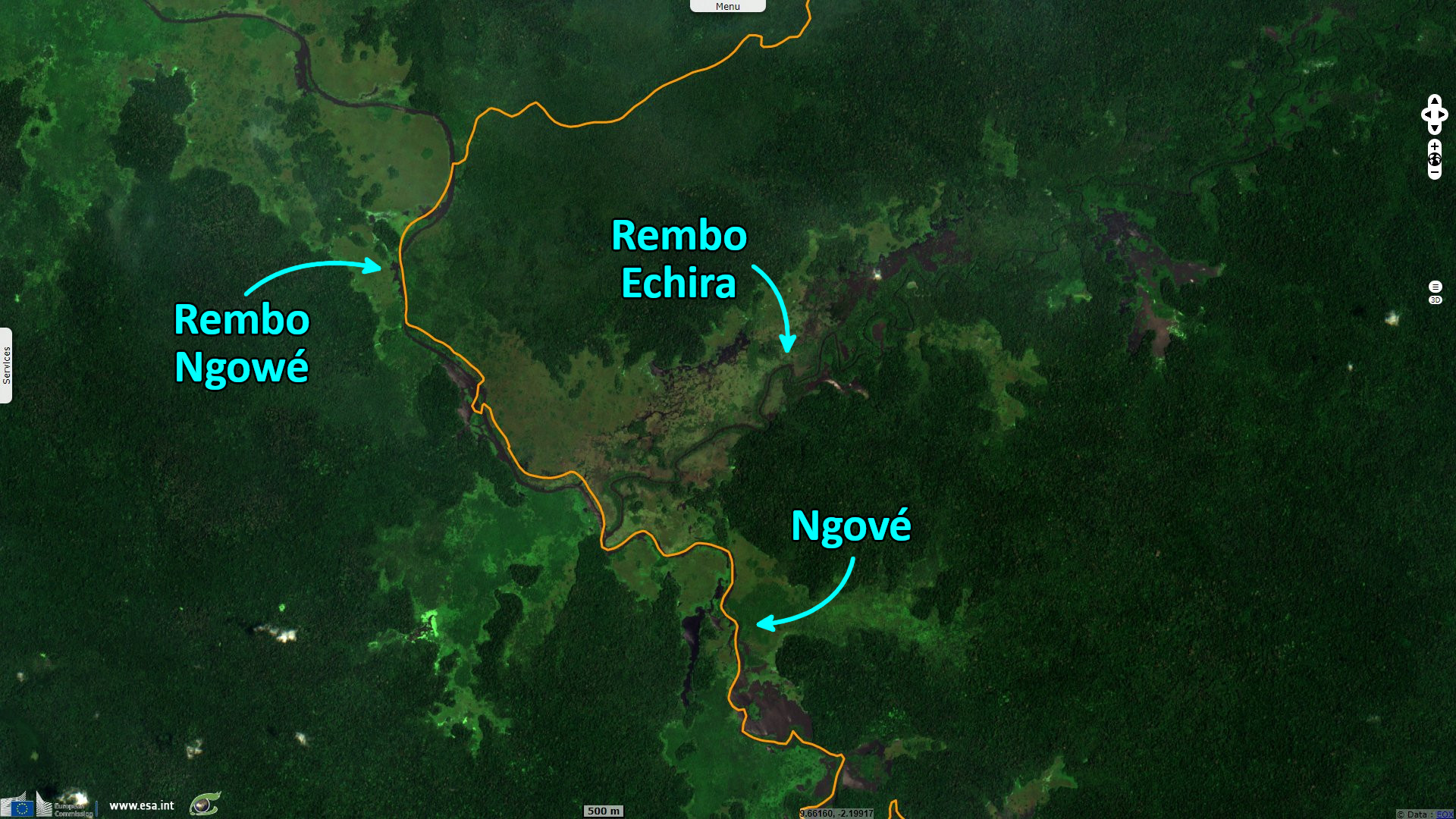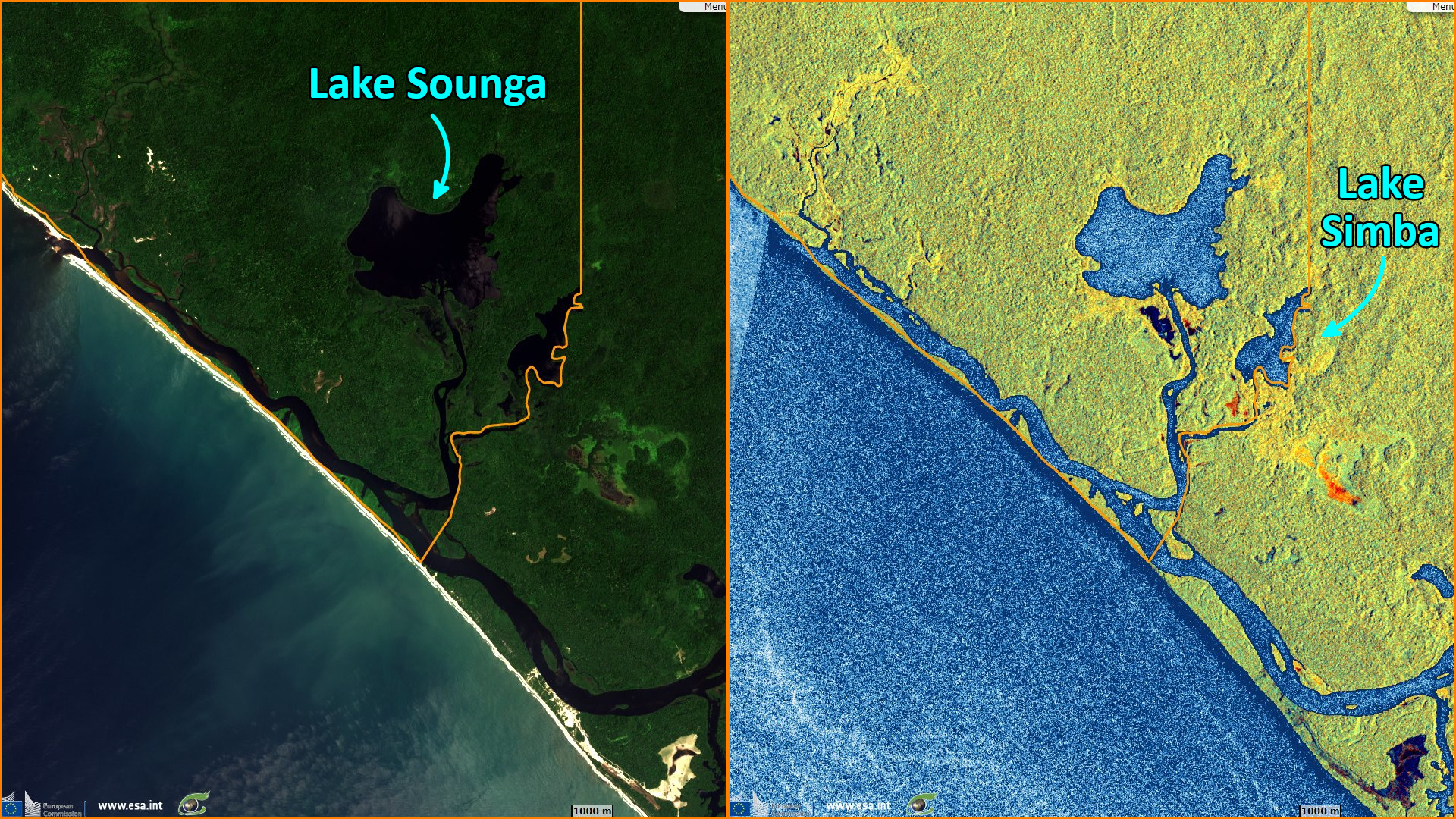A pristine example of biodiversity conservation in Loango National Park, Gabon
Sentinel-2 MSI acquired on 13 March 2017 at 09:30:31 UTC
Sentinel-2 MSI acquired on 02 April 2017 at 09:30:31 UTC
Sentinel-1 CSAR IW acquired on 04 May 2018 from 04:58:58 to 04:59:23 UTC
Sentinel-1 CSAR IW acquired on 09 May 2018 from 05:07:06 to 05:07:31 UTC
Sentinel-2 MSI acquired on 31 January 2023 at 09:32:31 UTC
Sentinel-2 MSI acquired on 02 April 2017 at 09:30:31 UTC
Sentinel-1 CSAR IW acquired on 04 May 2018 from 04:58:58 to 04:59:23 UTC
Sentinel-1 CSAR IW acquired on 09 May 2018 from 05:07:06 to 05:07:31 UTC
Sentinel-2 MSI acquired on 31 January 2023 at 09:32:31 UTC
Keyword(s): Coastal, land, beach, sandbars, lagoon, river, flood plain, forestry, swamps, savannah, mangrove, rainforest, ecotourism, biodiversity, RAMSAR wetland, Gabon
In an article dedicated to Loango National Park, Jessica Shaw wrote for Time Magazine: "The home of 'Africa’s Last Eden,' Gabon, sandwiched between Congo and Cameroon on the continent’s central Atlantic coast, may not have an ecotourism infrastructure like hot spots Botswana or Kenya. What Gabon does have, however, are 13 unspoiled national parks that cover 10% of the country. (Independent from France since only 1960, Gabon is considered by the U.N. to be a global leader in fighting climate change.) Loango National Park is one of the few places on the planet where rainforest meets ocean."
Registered in the UNESCO World Heritage Tentative List: The Loango National Park is located on the coast 300 km south of Libreville, it covers an area of 1550 km². It represents remarkable natural phenomena of beaches, coastal strips, lagoons and plains populated by an abundant and exceptional fauna.
The national park is also a RAMSAR wetland, described as follows: "Petit Loango is part of the lagoon complex of Iguela. It is a slightly undulating coastal plain with several lakes, dissected by small rivers and temporary and permanent swamps, set in a savanna, mangrove and rainforest environment."
Promoting the ecotourism in this site rich in biodiversity, Gabon Wildlife Camps adds: "Famous for its wild coastline, the national park is also brimming with mangrove forests, mirrored waterways, speckled tidal lagoons and a vast track of savannah." "There are very few places left in Equatorial Africa where you embark on a safari and experience ‘Big Five’ game yet Loango National Park’s remarkable range of biodiversity and pristine ecosystems provide nature lovers and intrepid travellers with such extraordinary occurrences."
In those 1550 km², visitors can see an extraordinarily diverse array of animals from water to land to sky. The UNESCO sheet complements: The property is home to significant biological diversity, with emblematic animals such as hippos bathing in the waves of the Atlantic Ocean and buffalo and elephants basking in the sun on the beaches. Among the countless wildlife that inhabit the park are bushpigs, several species of monkeys (which of chimpanzee), duikers, several species of reptiles and gorillas. The park is also inhabited by panthers. From the beach, humpback whales and dolphins can be seen from June to September.
The lagoons are also populated by an abundance of wildlife, including many species of fish such as tarpon, captain, barracuda, red carp, crocodile and even manatees. The mangroves, which border the park, are the breeding ground for many aquatic species and are inhabited by a rich birdlife with 355 bird species found in the park. The beaches of the park provide a nesting site for the three threatened turtle species: the leatherback, green turtle and hawksbill turtle. It is also a breeding site for the olive ridley sea turtle.
Beyond biodiversity, RAMSAR explains the importance of this site, opportunities and threats: "The Site plays an important role in flood control, sediment capture and bank stabilization through riverside vegetation. Given the very low population density and the area’s classification as a wildlife reserve, the Site is very scarcely used. The surroundings are used for tourism and for oil exploitation, which could constitute a threat in the future, especially if expanded."










